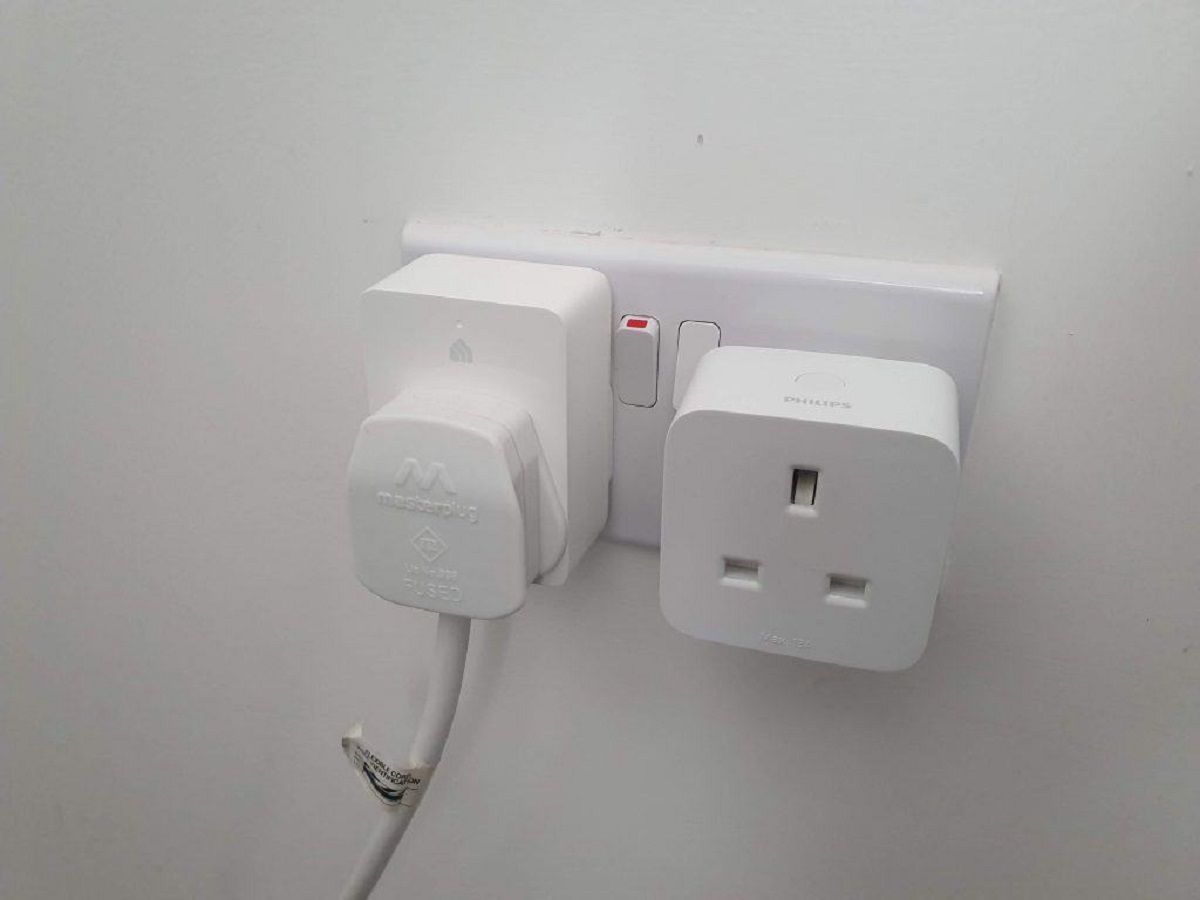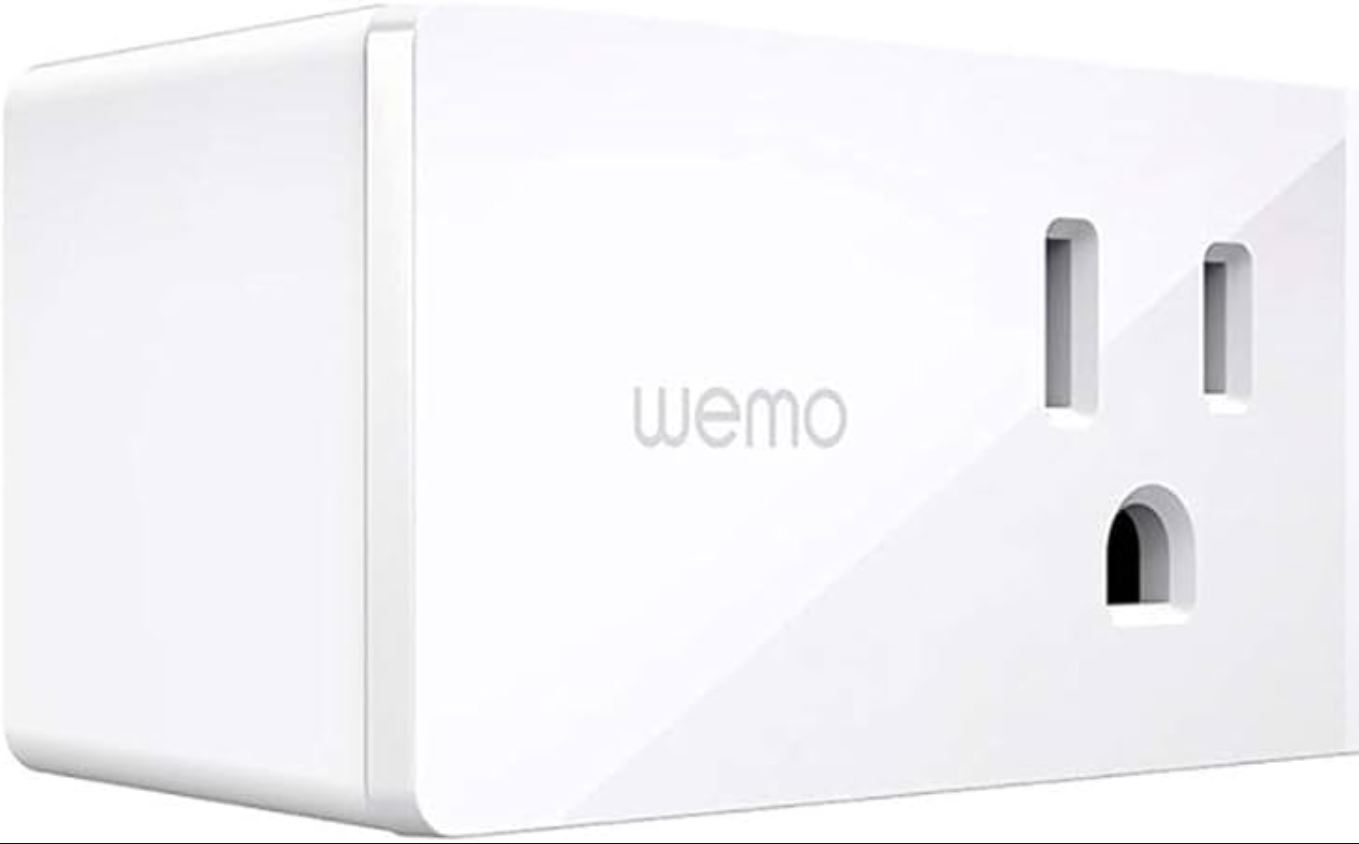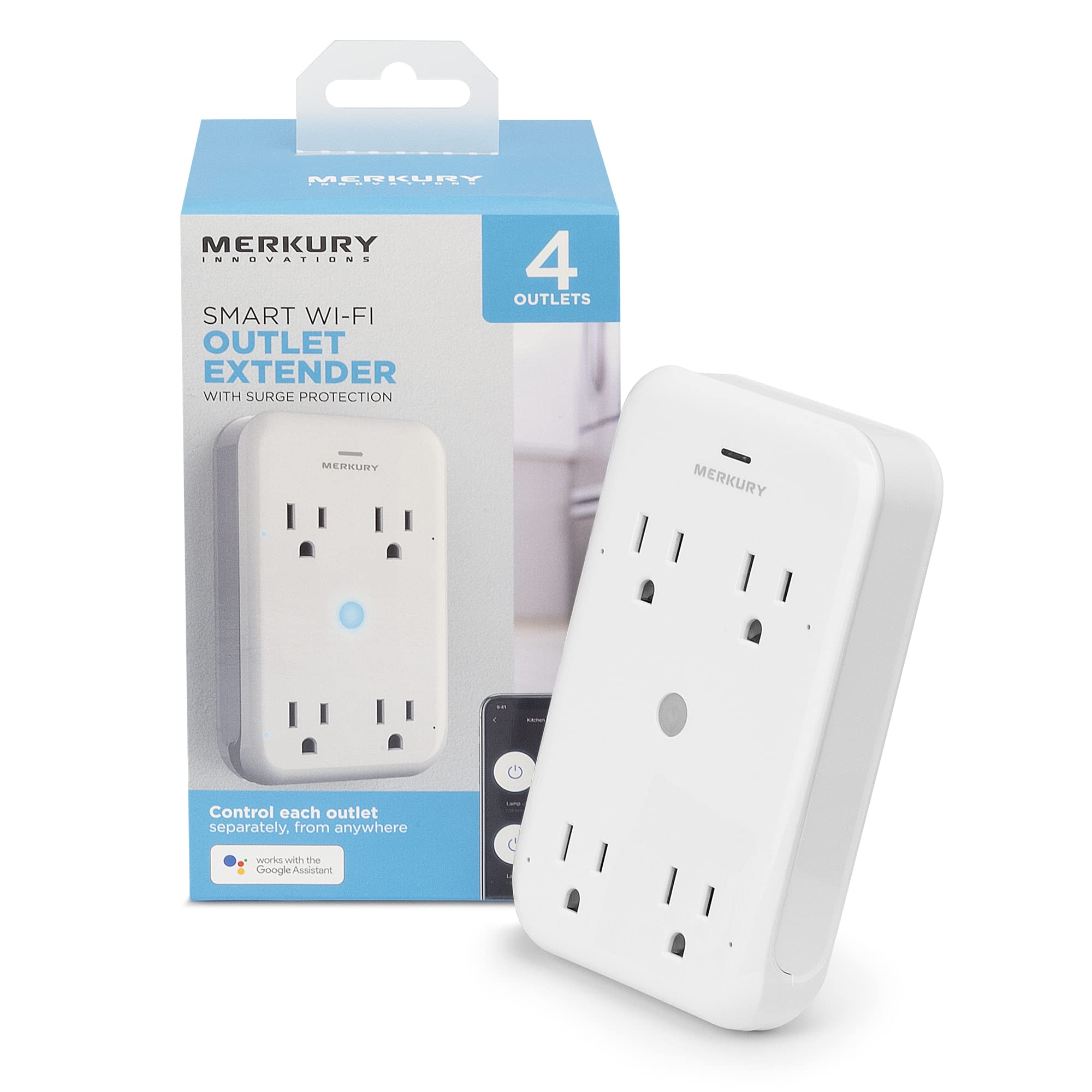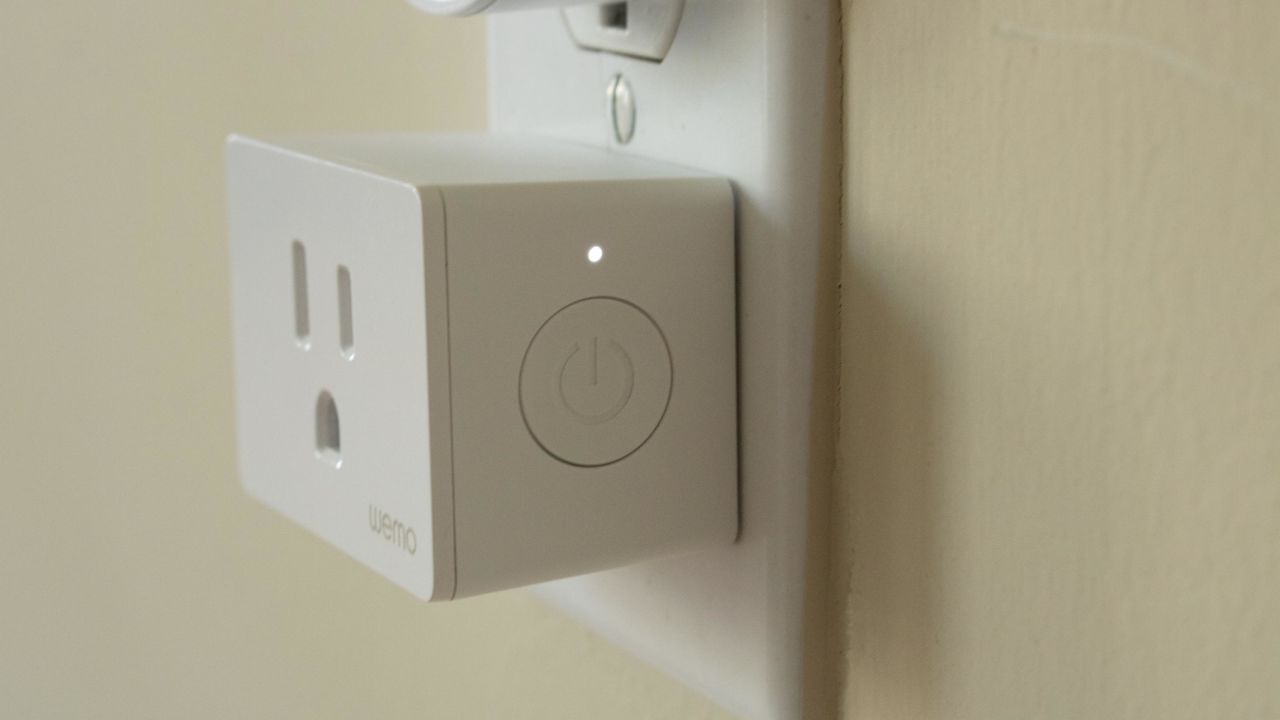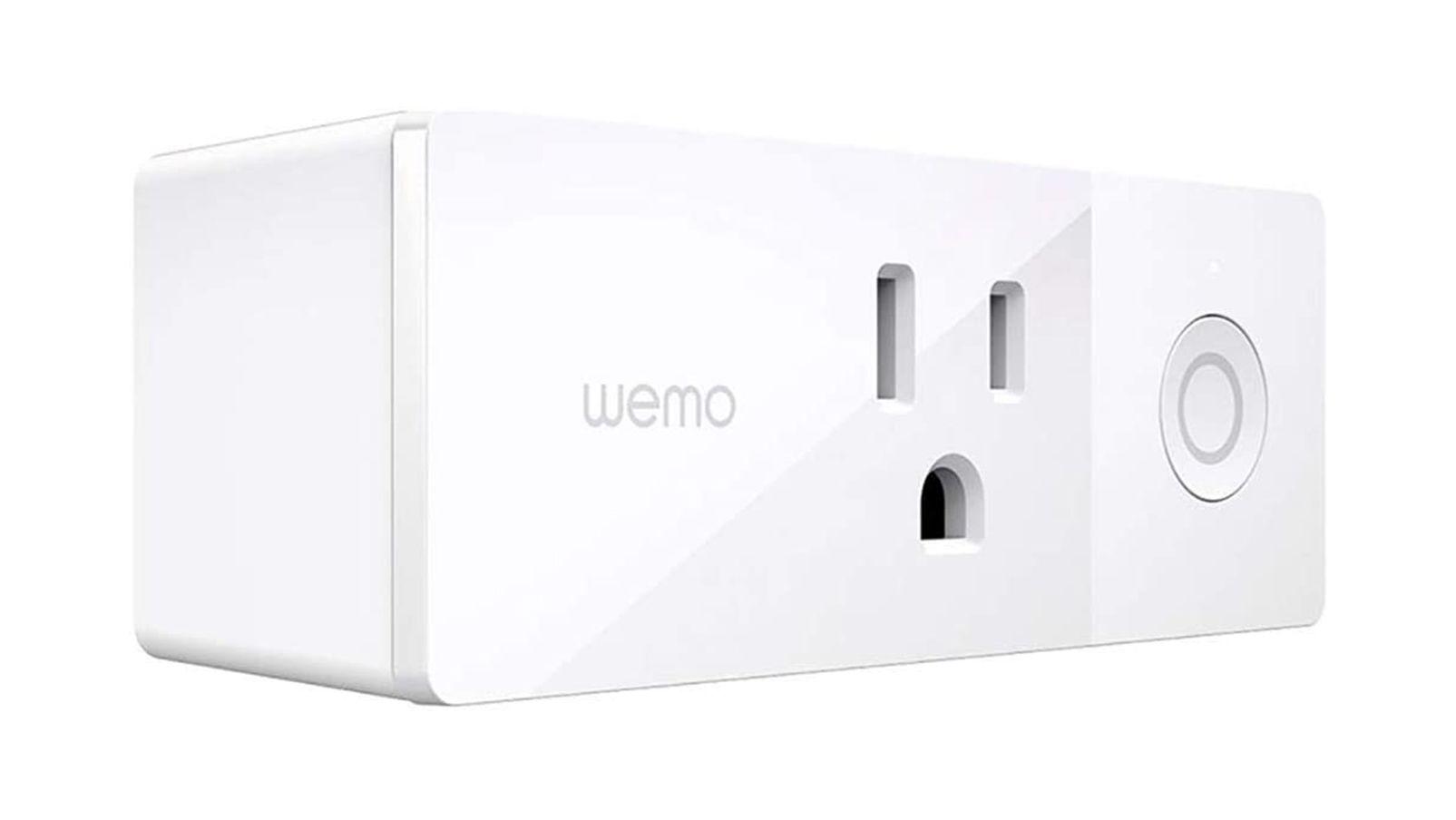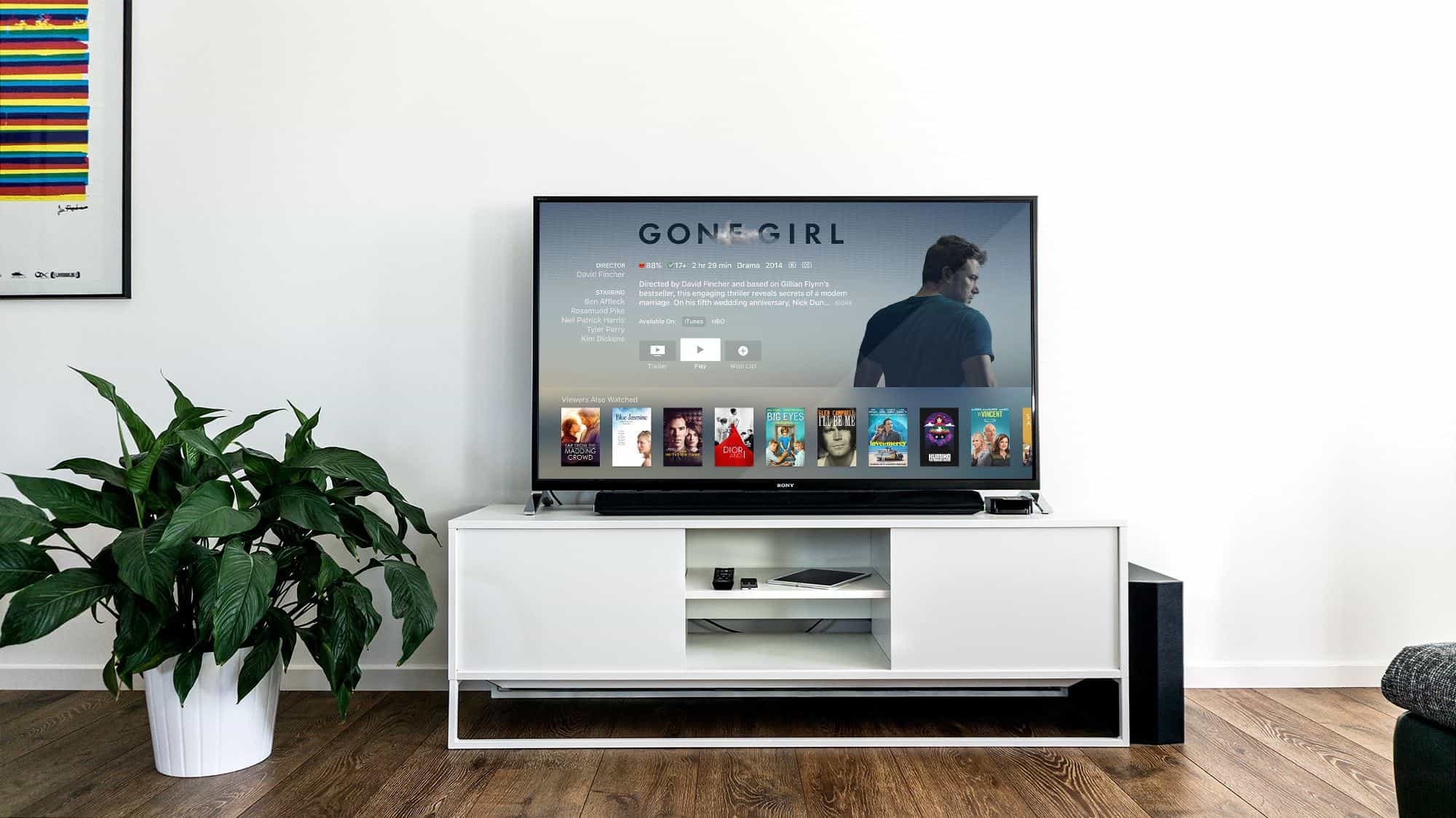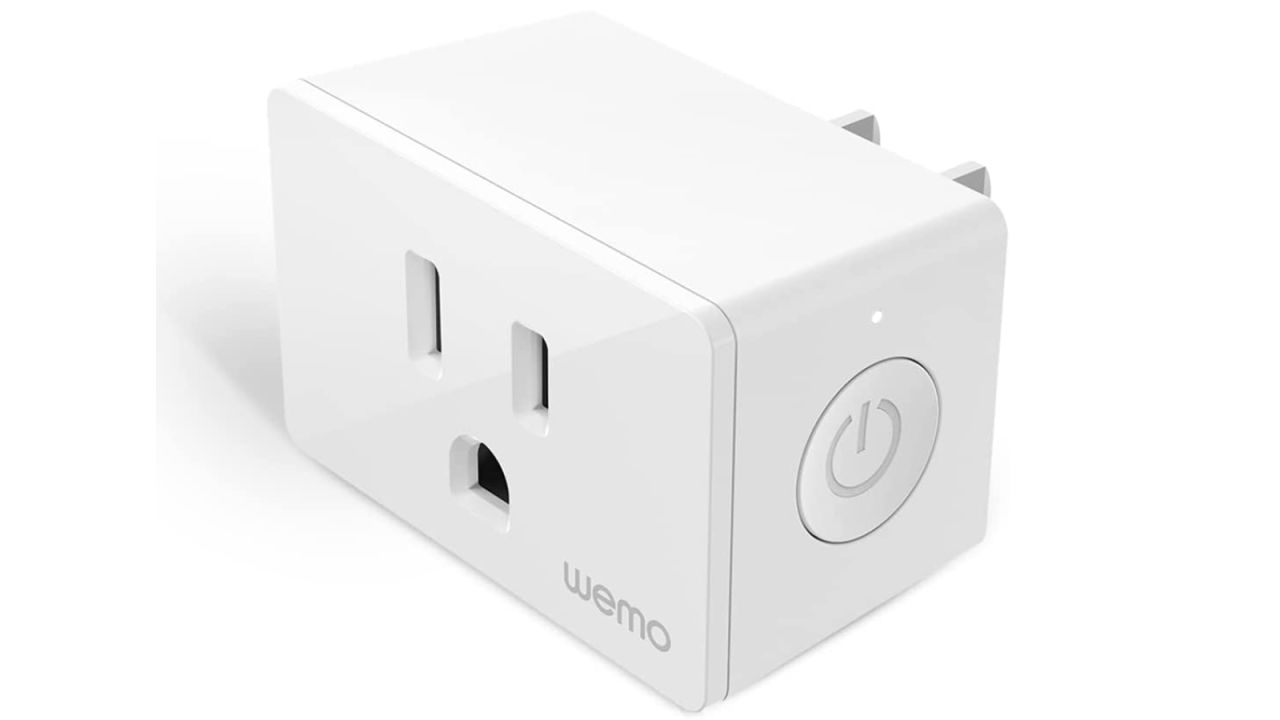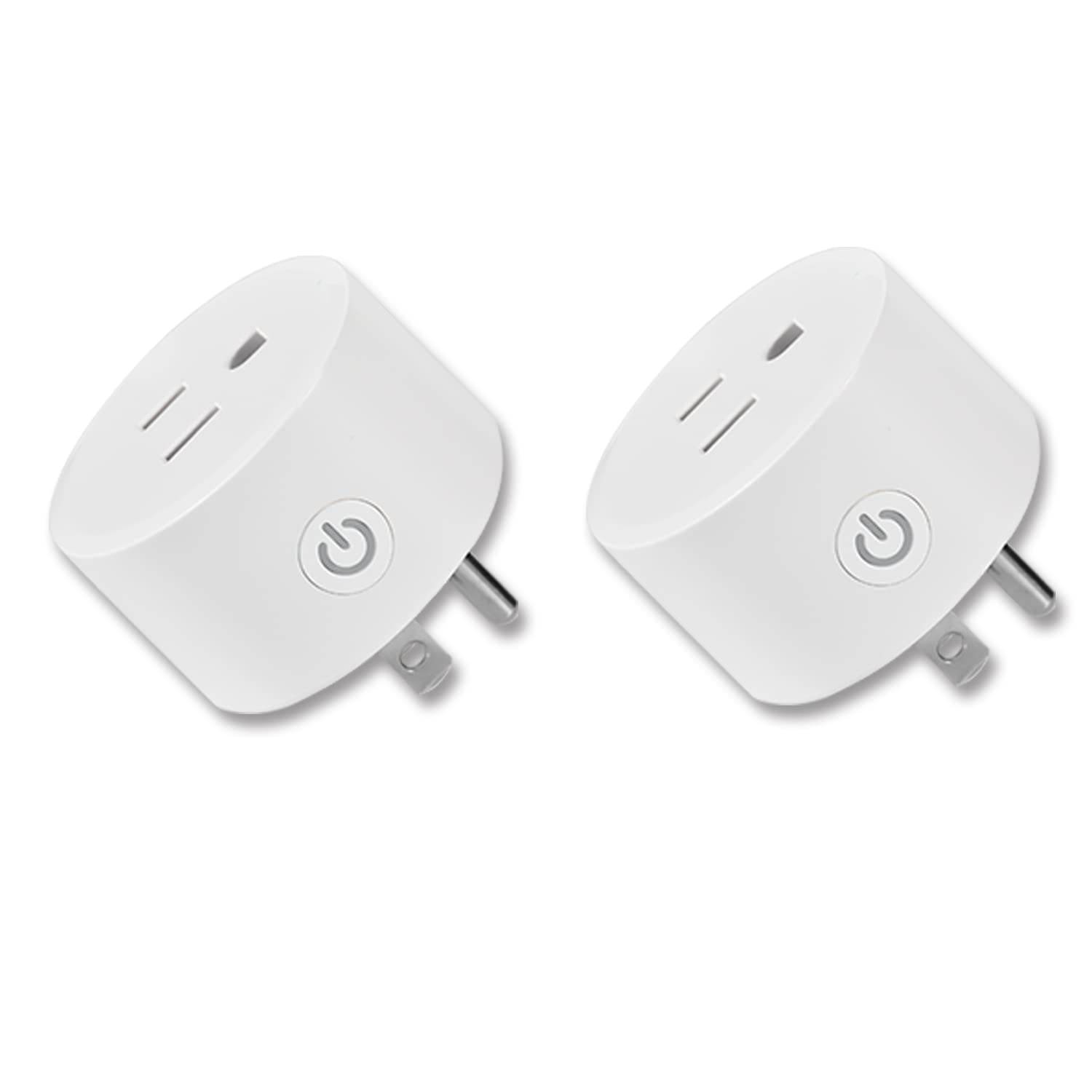Introduction
Welcome to the world of smart home technology, where devices like smart plugs offer convenience, control, and energy efficiency. Smart plugs are innovative gadgets that allow you to remotely control electrical devices from your smartphone or through voice assistants like Amazon Alexa or Google Assistant. With just a few taps on your phone or a simple voice command, you can turn on or off lights, appliances, and other electronics, even when you’re away from home.
While smart plugs can greatly simplify your daily life, you may occasionally encounter a frustrating issue: your smart plug keeps turning off unexpectedly. This can be frustrating and inconvenient, especially if you rely on the plug to automate your home or control important devices. But fear not! In this article, we will explore some of the common reasons why your smart plug might be turning off and provide troubleshooting steps to resolve the issue.
Before we dive into the possible causes and solutions, it’s important to have a basic understanding of how smart plugs work. Essentially, a smart plug acts as a bridge between your electrical outlet and the device you want to control. It connects to your Wi-Fi network and allows you to control the power supply to the connected device remotely. Smart plugs typically come with accompanying mobile apps that provide a user-friendly interface to manage and control your devices.
Now that we understand the fundamentals, let’s explore the potential reasons why your smart plug may be shutting off unexpectedly. By identifying the underlying cause, you’ll be better equipped to troubleshoot and resolve the issue, allowing you to fully enjoy the benefits of your smart home.
Understanding Smart Plugs
Smart plugs are small devices that fit into your standard electrical outlets, transforming them into smart outlets. These devices offer a convenient and cost-effective way to automate and control your home appliances and electronics. Understanding how smart plugs work is essential for troubleshooting any issues you may encounter.
At their core, smart plugs are designed to provide remote control over the power supply to the devices they’re plugged into. They enable you to turn devices on and off using a mobile app, voice commands, or even through pre-set schedules. This means you can control devices like lamps, fans, coffee makers, and even TVs from anywhere in the world using your smartphone.
Smart plugs typically connect to your home’s Wi-Fi network, allowing for seamless integration with other smart devices and platforms. They can be controlled individually, as well as grouped together for simultaneous control. This flexibility makes them an excellent addition to any smart home ecosystem.
Many smart plugs also come with additional features such as energy monitoring, which allows you to track the power consumption of your connected devices. This feature can help you identify energy-intensive appliances and make informed choices to reduce your energy usage and costs.
One of the significant benefits of using smart plugs is their compatibility with virtual assistants like Amazon Alexa or Google Assistant. This enables you to control your devices through voice commands, adding an extra layer of convenience and hands-free control.
Setting up a smart plug is typically a straightforward process. You plug the smart plug into a standard outlet, download the accompanying mobile app, and follow the instructions to connect the plug to your Wi-Fi network. Once connected, you can start controlling your devices remotely through the app or voice commands.
Now that we have a basic understanding of smart plugs and their capabilities, let’s explore some common reasons why your smart plug might be turning off unexpectedly, and how to troubleshoot these issues.
Common Reasons for Smart Plug Turning Off
While smart plugs are designed to provide seamless control over your devices, there are several reasons why they may unexpectedly turn off. Understanding these common reasons will help you troubleshoot and resolve the issue effectively. Here are a few possible explanations:
- Power Overload: Smart plugs, like any electrical outlet, have a maximum load capacity. If you connect multiple high-energy devices to a single smart plug or exceed its maximum power limit, the plug may automatically shut off to prevent overheating or electrical damage.
- Connectivity Problems: Smart plugs rely on a stable Wi-Fi connection to communicate with your smartphone or other connected devices. If the plug loses its connection to the network, it may turn off as a safety measure or to conserve power.
- Firmware Update: Manufacturers frequently release firmware updates to improve functionality, security, and compatibility. Your smart plug may automatically turn off and restart during an update, which can sometimes cause temporary disruptions in the device’s operation.
- Power Surges or Outages: Power surges or sudden electrical outages can trigger smart plugs to turn off as a protective measure. These power fluctuations can disrupt the plug’s operation, but it should resume normal function once the power stabilizes.
- Timer or Schedule Settings: If you have set up timers or schedules for your smart plug, it is possible that the turning off is a result of these pre-programmed settings. Double-check your scheduling settings to ensure they are aligned with your preferences.
Identifying the specific reason why your smart plug is turning off is the first step towards resolving the issue. In the following sections, we will guide you through troubleshooting steps to help you address these common problems effectively.
Issue 1: Power Overload
One of the common reasons why your smart plug may be turning off unexpectedly is due to a power overload. Smart plugs, like traditional outlets, have a maximum load capacity, which should not be exceeded. When you connect devices that draw a high amount of power to a single smart plug, it can lead to overheating and electrical damage, triggering the plug to shut off as a safety measure.
To resolve this issue, first, check the power requirements of the devices connected to the smart plug. Ensure that the combined wattage of all the devices is within the smart plug’s specified limits. You can typically find this information in the user manual or on the manufacturer’s website.
If you are exceeding the power limit, consider distributing the devices across multiple smart plugs or using a higher-capacity smart plug that can handle the load. This will help prevent power overloads and ensure the smooth operation of your devices.
In some cases, it may be necessary to identify energy-intensive appliances and prioritize their usage. For example, if you have a smart plug with power monitoring features, you can monitor the energy consumption of different devices and adjust their usage accordingly. This will not only prevent power overload issues but also help you conserve energy and reduce your electricity bills.
By managing the power load effectively and ensuring that it remains within the smart plug’s limits, you can overcome the issue of unexpected shutdowns due to power overload. However, if you continue to experience problems despite staying within the power limits, it may indicate a different underlying issue, which we will address in the following sections.
Issue 2: Connectivity Problems
Connectivity problems can also be a leading cause of unexpected shutdowns with your smart plug. These issues can arise due to various factors, such as a weak Wi-Fi signal, interference from other devices, or distance from the router.
To address connectivity problems, start by checking the signal strength of your Wi-Fi network in the area where the smart plug is located. If the signal is weak, consider relocating the router or using Wi-Fi range extenders to boost the signal coverage. This can improve the connection stability and prevent the smart plug from disconnecting frequently.
Another common culprit for connectivity issues is electromagnetic interference (EMI) from other electronic devices. Routers, cordless phones, microwaves, and other wireless devices can cause interference that disrupts the connection between the smart plug and the Wi-Fi network. To mitigate this, try moving the smart plug away from potential sources of EMI or relocating interfering devices further away from the smart plug.
Additionally, distance from the router can affect the performance of your smart plug. If your smart plug is located far away from the router, the Wi-Fi signal may not reach it reliably, leading to connectivity problems. In such cases, consider moving the smart plug closer to the router or installing additional routers or Wi-Fi repeaters to extend the signal range.
If you’ve tried the above steps and are still experiencing connectivity issues, try resetting both the smart plug and your router. This will allow them to establish a fresh connection and resolve any potential glitches. Follow the manufacturer’s instructions on how to reset your smart plug and router properly.
Remember to check for any firmware updates for both the smart plug and the router. Keeping the firmware up to date can often resolve connectivity issues and ensure compatibility with the latest network technologies.
By addressing connectivity problems, you can overcome unexpected shutdowns and ensure a stable and reliable connection between your smart plug and the Wi-Fi network. However, if the issue persists, there may be other factors at play, which we will explore in the following sections.
Issue 3: Firmware Update
Firmware updates are essential for maintaining the optimal performance and security of your smart plug. Manufacturers often release updates to address bugs, enhance features, and improve compatibility with other devices and platforms. Sometimes, these updates can cause your smart plug to turn off briefly or experience temporary disruptions.
If you suspect that a firmware update is the cause of your smart plug’s unexpected shutdowns, check whether there are any pending updates for your smart plug. Most smart plug manufacturers provide firmware updates through their respective mobile apps or websites.
To update the firmware, follow the instructions provided by the manufacturer. This typically involves connecting your smartphone to the smart plug’s network and initiating the update process through the app. During the update, the smart plug may temporarily turn off and restart as it applies the latest firmware.
It’s important to ensure a stable and uninterrupted internet connection during the firmware update process. Interruptions or disruptions can result in incomplete updates, which may lead to further issues with the smart plug’s performance.
After the firmware update is complete, test the smart plug to see if the unexpected shutdowns persist. In most cases, the update resolves any glitches or compatibility issues, leading to smoother operation of the smart plug.
If the firmware update does not resolve the problem or if you encounter errors during the update process, contact the manufacturer’s support team for further assistance. They may be able to provide additional troubleshooting steps or offer guidance on resolving the issue.
Keeping your smart plug’s firmware up to date is crucial for ensuring optimal performance, stability, and compatibility with other devices and platforms. It’s recommended to regularly check for updates and install them as they become available, as this can help prevent unexpected shutdowns and improve the overall functionality of your smart plug.
Issue 4: Power Surges or Outages
Power surges and outages can be disruptive to the operation of your smart plug, leading to unexpected shutdowns. When your home experiences a sudden surge or loss of electrical power, the smart plug may automatically turn off to protect itself and the connected devices.
Power surges, which are sudden increases in electrical voltage, can occur due to lightning strikes, faulty wiring, or issues with the power grid. These surges can exceed the smart plug’s capacity and trigger a shutdown. On the other hand, power outages, which are complete loss of electrical power, can also cause the smart plug to turn off as it no longer receives power.
To address power surge or outage-related shutdowns, consider using surge protectors or power strips with built-in surge protection. These devices can help absorb and redirect excess electrical voltage, shielding your smart plug and connected devices from potential damage. Make sure to choose surge protectors that are appropriate for the electrical load of the devices connected to the smart plug.
In the event of power outages, you may opt to install an uninterruptible power supply (UPS) for critical devices. A UPS provides temporary backup power, allowing your smart plug and other essential electronics to remain operational during short power interruptions. This can help prevent unexpected shutdowns and ensure that your devices continue to function seamlessly.
If you are experiencing frequent power surges or outages, it may be necessary to consult with an electrician to inspect and address any underlying issues with your home’s electrical system. Faulty wiring or inadequate power capacity can contribute to the instability of the electrical supply, leading to repeated shutdowns of your smart plug.
While power surges and outages are beyond your control, taking proactive measures to safeguard your smart plug and connected devices can minimize the inconvenience caused by unexpected shutdowns. By investing in surge protectors, UPS devices, and addressing any electrical issues, you can ensure reliable operation of your smart plug even during adverse power conditions.
Issue 5: Timer or Schedule Settings
If your smart plug keeps turning off unexpectedly, it could be due to incorrect timer or schedule settings. Most smart plugs allow you to set timers or schedules to automate the turning on or off of connected devices. However, if these settings are not properly configured, it can result in your smart plug shutting off at unexpected times.
Start by double-checking the timer or schedule settings in the mobile app or device interface that controls your smart plug. Ensure that the timings are set correctly and align with your desired preferences. It’s possible that you may have accidentally set a timer or schedule that is causing the unexpected shutdowns.
Additionally, consider the time zone setting on your smart plug and make sure it is correctly configured. If the time zone is incorrect, it may cause the smart plug to turn off at incorrect times due to a discrepancy between the device’s internal clock and the actual time.
If you are using multiple timers or schedules for different devices connected to the same smart plug, ensure that there are no conflicts in the timings. Overlapping or conflicting timers can cause the plug to turn off unexpectedly or behave erratically. Adjust the settings so that the timers or schedules do not overlap, and they reflect your intended usage pattern.
It’s also worth mentioning that some smart plugs have a random or vacation mode, which is designed to make it appear as if someone is home by turning lights or electronic devices on and off at random times. If you have enabled this mode and are experiencing unexpected shutdowns, it could be due to the random nature of the setting. Consider disabling the random or vacation mode and observe if the smart plug continues to turn off unexpectedly.
Lastly, ensure that the smart plug’s internal clock is accurate and synced with the correct time. Some smart plugs rely on an internal clock to trigger the timers or schedules. If the clock is out of sync, it can cause the plug to turn off at the wrong times. Check the clock settings within the app or device interface and adjust if necessary.
By reviewing and adjusting your timer or schedule settings, you can prevent unexpected shutdowns and ensure that your smart plug operates according to your desired schedule. Take the time to double-check these settings periodically, especially when you notice any inconsistencies in your smart plug’s behavior.
Troubleshooting Steps
If your smart plug keeps turning off unexpectedly, there are several troubleshooting steps you can take to identify and resolve the issue. Follow these steps to help pinpoint the underlying cause and restore the proper functioning of your smart plug:
- Check the power supply: Ensure that the smart plug is securely plugged into a functioning power outlet. Verify that the outlet itself is receiving power by connecting a different device and confirming its operation.
- Review the device load: Make sure that the combined power consumption of the devices connected to the smart plug is within the plug’s specified limits. Remove any energy-intensive devices or redistribute them across multiple smart plugs if necessary.
- Verify the Wi-Fi connection: Confirm that your smart plug is connected to your Wi-Fi network. Check the signal strength and stability in the area where the plug is located. Restart your router and smart plug if needed to establish a fresh and stable connection.
- Update firmware: Check for any pending firmware updates for your smart plug. Install the updates following the manufacturer’s instructions to enhance functionality, compatibility, and stability.
- Review timers and schedules: Double-check your timer and schedule settings to ensure they are configured correctly and aligned with your intended usage. Avoid conflicts, overlapping schedules, and incorrect time zone settings that may cause the plug to turn off unexpectedly.
- Address power surges or outages: Use surge protectors or power strips with built-in surge protection to shield your smart plug from power surges. Consider installing a UPS for critical devices to prevent unexpected shutdowns during power outages.
- Reset and reconnect: If all else fails, try resetting both the smart plug and your router. Follow the manufacturer’s instructions to perform a proper reset and then reconnect the smart plug to your Wi-Fi network.
As you troubleshoot, it’s important to document any changes you make and monitor the behavior of your smart plug. This will help you identify patterns and potential causes of the unexpected shutdowns.
If you continue to experience issues with your smart plug despite following these troubleshooting steps, reach out to the manufacturer’s support team for further assistance. They can provide additional guidance and more specific troubleshooting steps based on the model and make of your smart plug.
Conclusion
Smart plugs are incredibly convenient devices that offer control and automation for various electrical devices in your home. However, if your smart plug keeps turning off unexpectedly, it can be frustrating and disrupt your daily routines. By understanding the common reasons behind these shutdowns and following the troubleshooting steps outlined in this article, you can resolve the issue and enjoy the full benefits of your smart plug.
We discussed various potential causes for your smart plug shutting off, including power overload, connectivity problems, firmware updates, power surges or outages, and timer or schedule settings. By addressing these issues, you can minimize the occurrence of unexpected shutdowns.
Remember to check the power load on your smart plug and distribute devices appropriately to avoid power overload. Address connectivity problems by optimizing your Wi-Fi signal strength and minimizing interference. Keep your smart plug’s firmware up to date to ensure compatibility and stability. Protect your smart plug from power surges and outages with surge protectors and consider backup power options like UPS devices. Lastly, review and configure your timer and schedule settings accurately to avoid any conflicts or incorrect timing.
If you have followed the troubleshooting steps and the unexpected shutdowns persist, it’s advisable to reach out to the manufacturer’s support team for further assistance. They can provide additional guidance tailored to your specific smart plug model.
With proactive troubleshooting and a comprehensive understanding of your smart plug’s functionalities and potential issues, you can ensure a seamless experience and take full advantage of the convenience and control that smart plugs bring to your smart home ecosystem.







